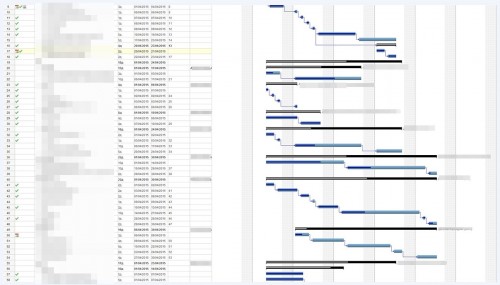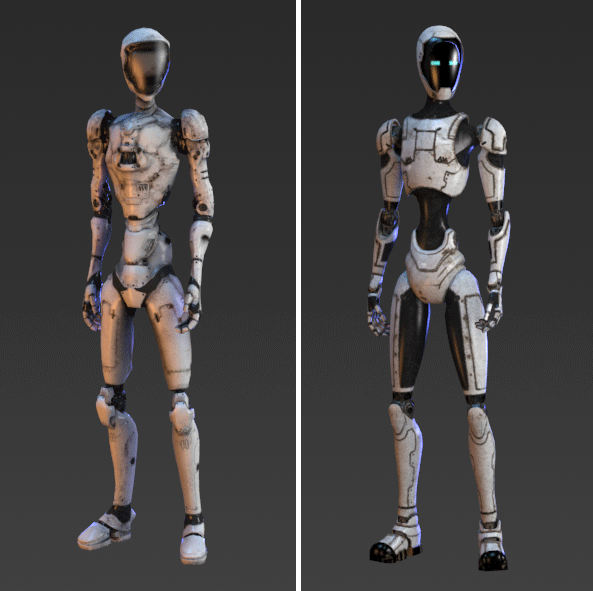Developer Diaries: The Unknown (#2)
Within the framework of the “developer diaries” format, we publish the second note of the ComonGames team. In the new material, The manager of The Uncertain project Artem Netyagin talks about creating models for the game.

In the second essay, I want to talk about what I realized while working on the project, as well as how we create our game characters using the example of one of the robots.
As I wrote in the last article, my projects used to be done on enthusiasm and were not so large-scale. The Unknown was the first major project in my life. And it really captured me: I discovered a lot of new things, worked with a large team for the first time, gained very valuable experience in project management.
But how many mistakes were made due to inexperience! Today, looking back at the first months of development, I wonder how I could have been so stupid. But I am always comforted by the phrase: only those who do nothing are not mistaken. And although sometimes it even got to the point that it was necessary to completely redo the model or the whole location, the project was still moving forward.
My most serious mistake is, of course, the definition of project deadlines. Now I know that development time should be allocated at least twice as much as planned, because there are always circumstances that slow down work: weekends and holidays, employee illnesses and much more.
By the way, having embarked on the path of serious development as a manager, get ready for routine work. There will be a lot of it. For example, I had to make such terrible tables in order to understand the amount of work and the required size of the team.
Another obvious mistake is underestimating the complexity of the project. There is always much more work than it seems at first (even if the project does not look big and complicated). It is important to remember that each element of the game is created by a whole group of developers and it depends on the project manager how well-coordinated and productive their cooperation will be. Therefore, to organize the work of the whole team competently is his main goal.
In our case, an artist, two modellers and an animator worked on each character, and a programmer and a game designer created a controller in the engine for each character, taught the characters to walk and talk.
The first important achievement of our joint work was the new model of the main character.
As you may have noticed, the new model has many differences from the original. We all liked this version of the hero’s appearance, and we decided not to change anything else in it.
Old and new models of the main character
We named the character RT (RT-217NP).
When I was thinking about who the main character would be, first of all, I wanted to move away from the cliche: I decided that RT would not have superpowers, have a special purpose, he would not be special, chosen. This is an ordinary robot, one of thousands of others, who suddenly found himself in trouble. The only “highlight” of the hero, added so that the player would not be bored, is his face (more precisely, the screen). The player can see not only the robot’s eyes on it, but also various symbols indicating its attitude to something. The rest of the robots just have glowing eyepieces.
We created each character in six stages. Let’s look at them using the example of Abigail’s medical robot.
First stage: art
At the first stage, we discuss the character in detail with the artist, and he makes several sketches. We choose the one we like, and then refine it.
During the development, we realized that there is no need to draw the characters in as much detail as possible at this stage, since the modeler needs only average detail. But it is important to draw robots and complex objects from both sides, so as not to risk relying on someone else’s imagination. If something does not come out very well, the artist will easily make edits to the drawing. It is much more difficult to do this in the hypoli model.
Second stage: Highpoli model
At this stage, the CG artist can smooth the model, creating a huge number of polygons, can not deny himself anything at all. However, there is a difficulty: you need to take into account the peculiarities of movements. Fortunately, the engineering experience of one of our modellers helped to make the design of the joints correct: they should not bend in places where joints should not bend in principle. In addition, modeling by art is more difficult than, for example, by drawing. But the guys I found were experienced and coped with the task.
The third stage: the loopoli model.
It includes retopology – a repetition of the hypoli form of the model, but with a minimum polycount value. Then a scan is done for this model. After that, texture maps are baked: normal, ambient occlusion, color ID and others.
Fourth stage: texturing
On the basis of baked maps, textures are created for PBS in Unity. A lot of specialized programs greatly simplify this process and give amazing results and high detail. At the end of this stage, the resulting model with textures is loaded into the game engine and its appearance is adjusted.
Fifth stage: rig
In order for the model to move, it needs to create bones. This is a very difficult stage that requires a lot of experience and knowledge. Today there are software solutions that can make a rig automatically and bind animation to it, but with this method the result is much worse than when creating a rig manually. And they are more suitable for organic characters: robots begin to bend and distort metal joints, which in our case looked terrible.
Sixth stage: animation
If we want to breathe life into the characters, then we cannot do without this stage. In our case, robot animations can be divided into two types: basic and cinematics.
Basic animations (walking, running, picking up objects, gestures during dialogues) are used in gameplay.
Cinematics are often used once or several times during the entire game. They are created specifically for important moments in which the player cannot interfere, or for Quick Time Events.
We did some other models in a similar way. When there was no need for strong detail, we immediately created loopoli models and textured them. We bought some models in the Asset Store and modified them a little to fit better into our game world.
In the next article I will tell you how the locations and gameplay were created.
Web: http://theuncertaingame.com
Steam: http://store.steampowered.com/app/406970
NVIDIA SHIELD: https://shield.nvidia.com/games/android/the-uncertainDid you like the format?
Let me know in the comments.
If you have a desire to participate yourself – write to press@app2top.ru . We will consider applications, if they are interested, we will definitely respond.







